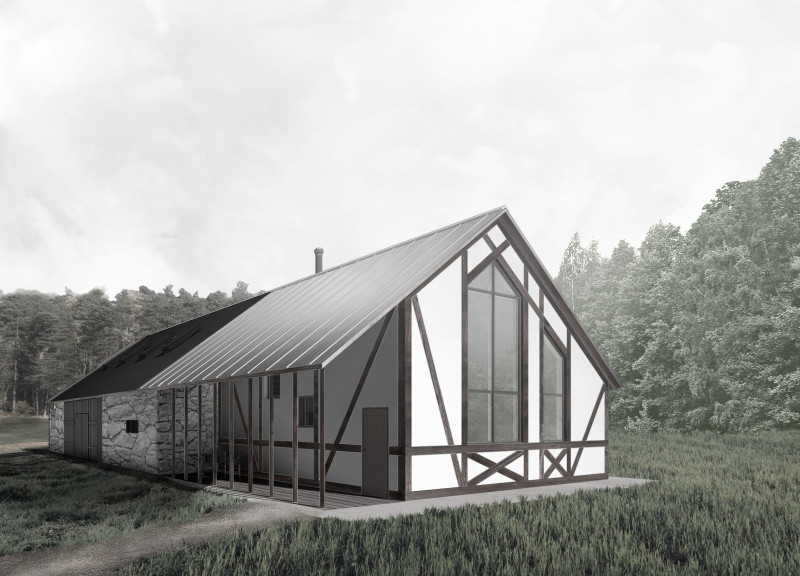5 key facts about this project
Unique Design Approaches and Elements
The architectural design of the Teamakers Guest House incorporates several unique features that distinguish it within the realm of similar projects. The first notable aspect is the strategic layout, which divides the structure into three distinct sections: communal areas, private quarters, and outdoor spaces. This organization allows for varied spatial experiences, catering to both social interactions and individual privacy.
The integration of an open terrace is particularly noteworthy. This feature extends the living area outdoors and fosters a connection with the surrounding environment, promoting outdoor activities and relaxation. The design utilizes large glass panels that not only provide expansive views of the landscape but also enhance natural lighting within the interiors.
Material selection plays a critical role in the design philosophy. The combination of traditional materials such as natural stone and timber with contemporary elements like metal roofing creates a balanced aesthetic, blending rustic charm with modern sophistication. The use of stone supports durability while helping the building maintain thermal comfort, an essential aspect for year-round use. Timber elements provide warmth and visual interest, reinforcing the intimate atmosphere.
Structural Features and Functionality
The interior layout is characterized by its open-plan concept, facilitating seamless movement between spaces. Key areas include a communal living room designed for social interaction, equipped with modern furnishings that complement the building’s historic features. The kitchen emphasizes functionality, encouraging collaborative cooking experiences among guests.
Private quarters are strategically positioned to ensure comfort and quiet, separate from communal activities. This thoughtful arrangement supports a comfortable experience for visitors seeking both interaction and solitude. The design addresses seasonal considerations, ensuring that both indoor and outdoor spaces can be utilized throughout the year.
In summary, the Teamakers Guest House exemplifies a successful blend of heritage and contemporary architectural design. It prioritizes functionality and user experience while maintaining a strong connection to the local landscape. For a more detailed understanding of the architectural plans, sections, and designs of this project, readers are encouraged to explore the project presentation further.


























